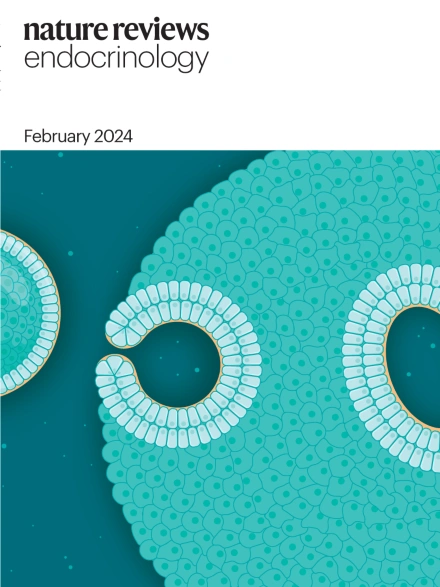A modified liver enzyme with enhanced stability helps to control glycaemia
IF 40
1区 医学
Q1 ENDOCRINOLOGY & METABOLISM
引用次数: 0

稳定性更强的改良肝酶有助于控制血糖
降低骨骼肌中的胰岛素抵抗是控制 2 型糖尿病(T2DM)患者血糖水平的一种很有前景的潜在策略。发表在《糖尿病学》(Diabetologia)上的一项研究现在表明,用HEXA-Fc(一种由肝脏酶己糖胺酶A(HEXA)与免疫球蛋白G1的可结晶片段(Fc)区域融合而成的蛋白质)治疗肥胖症和T2DM小鼠,可以促进骨骼肌对葡萄糖的吸收。他们给以高脂肪饮食诱导肥胖的野生型小鼠注射了HEXA-Fc,然后收集了小鼠的几种组织,包括骨骼肌、脂肪组织、下丘脑和肝脏。他们对这些组织进行了免疫印迹分析,结果发现骨骼肌中的HEXA-Fc含量高于其他任何组织。他们还发现,虽然用HEXA-Fc治疗的肥胖小鼠的胰岛素耐受性没有改变,但这些小鼠的葡萄糖耐受性明显增加,葡萄糖刺激的胰岛素分泌减少。
本文章由计算机程序翻译,如有差异,请以英文原文为准。
求助全文
约1分钟内获得全文
求助全文
来源期刊

Nature Reviews Endocrinology
医学-内分泌学与代谢
CiteScore
42.00
自引率
0.70%
发文量
158
审稿时长
6-12 weeks
期刊介绍:
Nature Reviews Endocrinology aspires to be the foremost platform for reviews and commentaries catering to the scientific communities it serves. The journal aims to publish articles characterized by authority, accessibility, and clarity, enhanced with easily understandable figures, tables, and other visual aids. The goal is to offer an unparalleled service to authors, referees, and readers, striving to maximize the usefulness and impact of each article. Nature Reviews Endocrinology publishes Research Highlights, Comments, News & Views, Reviews, Consensus Statements, and Perspectives relevant to researchers and clinicians in the fields of endocrinology and metabolism. Its broad scope ensures that the work it publishes reaches the widest possible audience.
 求助内容:
求助内容: 应助结果提醒方式:
应助结果提醒方式:


